Writing about the new Ford E-Transit van poses an interesting challenge, because Ford has done its level best to build a full-electric version of the popular diesel Transit that is visually almost indistinguishable from its internal combustion engine (ICE) sibling.
From the exterior, the electric version can only be differentiated by the blue highlights in the grille, and the E-Transit badge on the rear. The difference really only comes apparent when driving, and that’s where the electric version wins hands down.
Except, of course, on the price. Ford is asking $105,000, plus on roads, for the electric E-Transit. It has a 68kWh battery, with a range of up to 307 km (WLTP) for the mid-roof version, and 295 km (WLTP) for the high roof version.
Back to its appearance: On closer inspection of the grille, under the prominent Ford badge is the charging door that opens to reveal a charging port capable of up to 11.3 kW (three phase) AC charging and 115 kW DC.
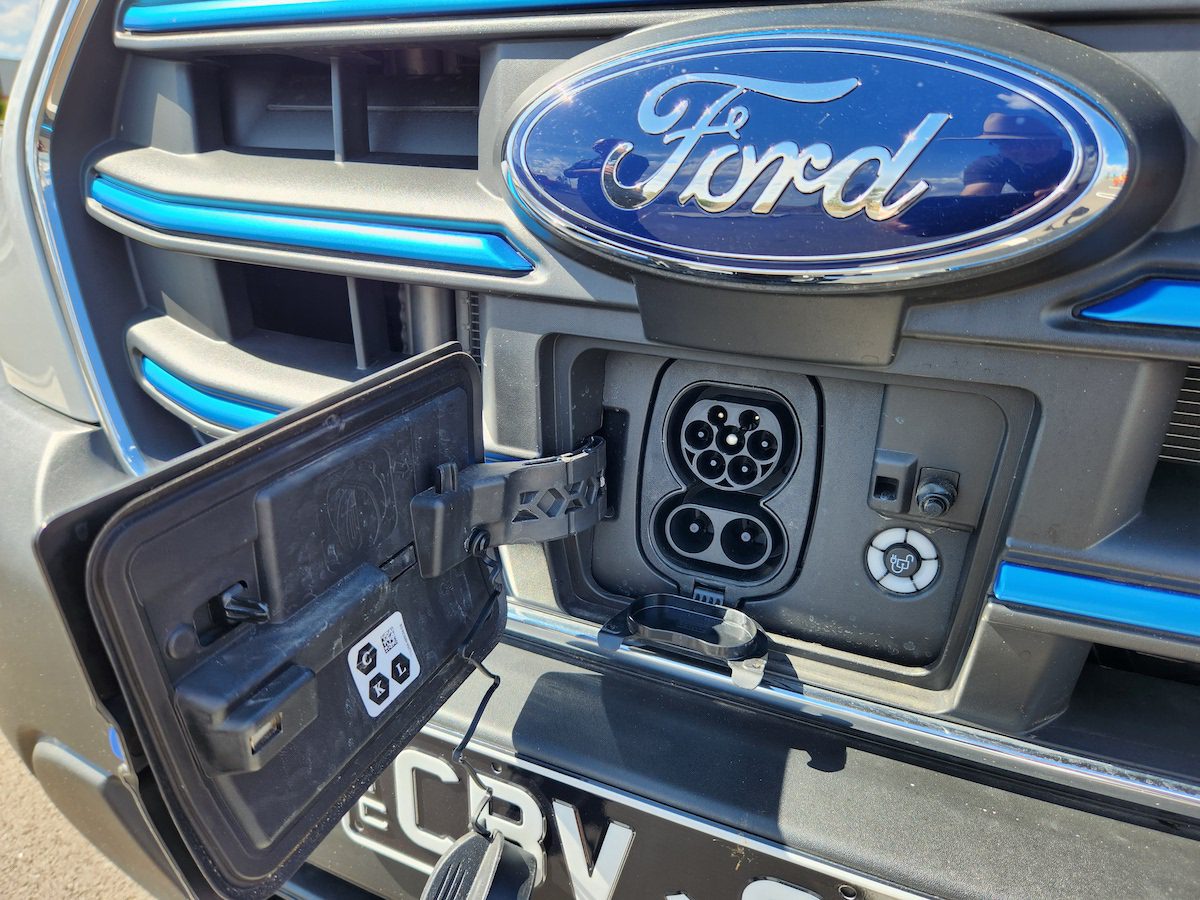
Interior wise, the differences are even more subtle. From the driver’s seat, the cabin appears at first glance identical to the ICE versions in terms of the dash layout, seats and touch-screen.
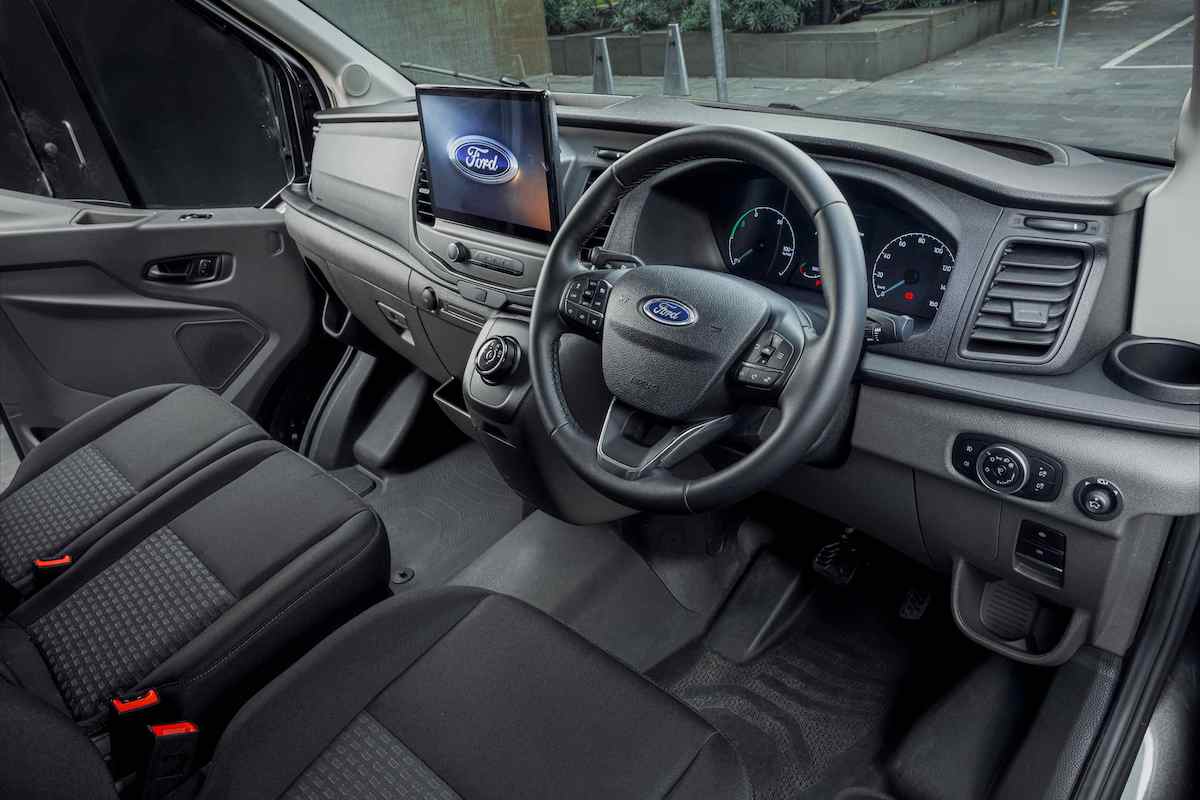
Even the driver’s instrument cluster is the same, although a closer inspection reveals subtle tweaks to reflect the different propulsion method – such as a power meter instead of a tachometer and a picture of a battery cell instead of a fuel pump next to the ‘fuel’ gauge.
Drive mode selection is straight forward with a rotary dial showing the usual Park, reverse, Drive – plus an L function button in the middle of the dial to engage a more one-pedal driving feel.
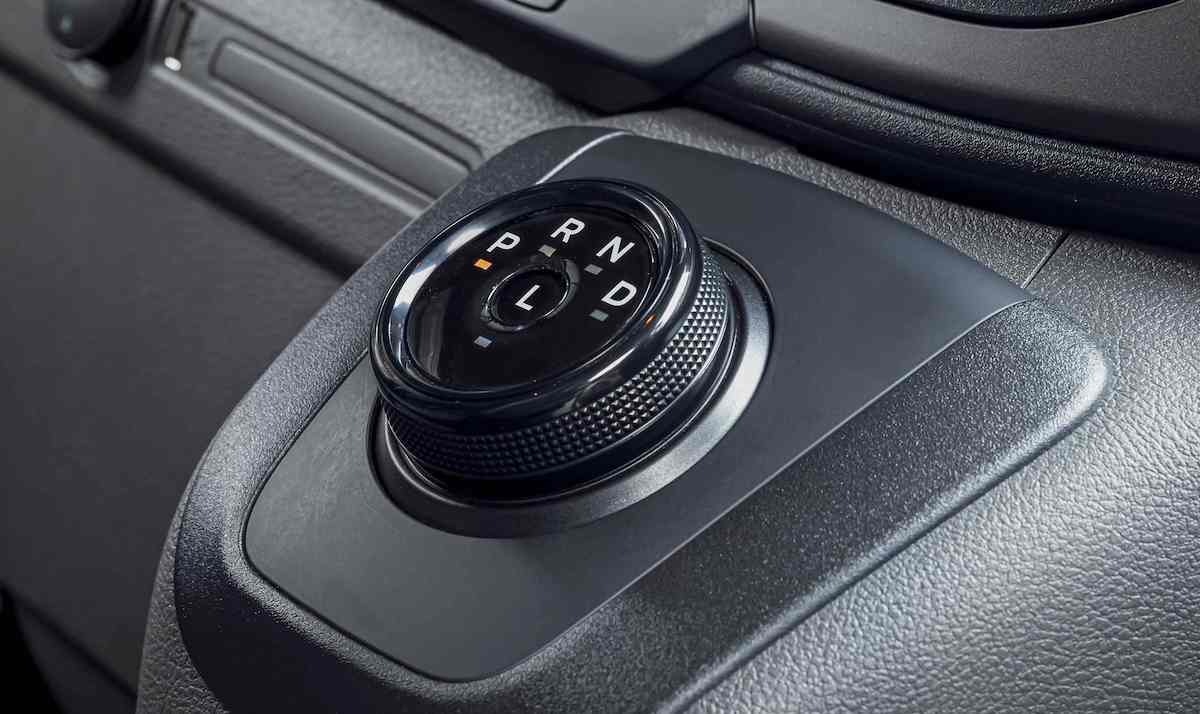
Three driving modes are also available for selection via touch screen or physical button – Normal, Eco and Slippery. (The last being for improved traction in wet/snowy/icy conditions).
Built on the same monocoque body as the ICE version, the battery electric (BEV) version is however cunningly different underneath – the battery and electric motor are mounted on sub-frames that bolt to the standard chassis.
Whilst still rear-wheel drive, the electric version has the motor mounted between the rear wheels, freeing up the space previously taken up by the gearbox and tailshaft for the battery. With the emptying of the former engine bay also comes the shifting of the spare wheel from under the rear to under the front of the vehicle.
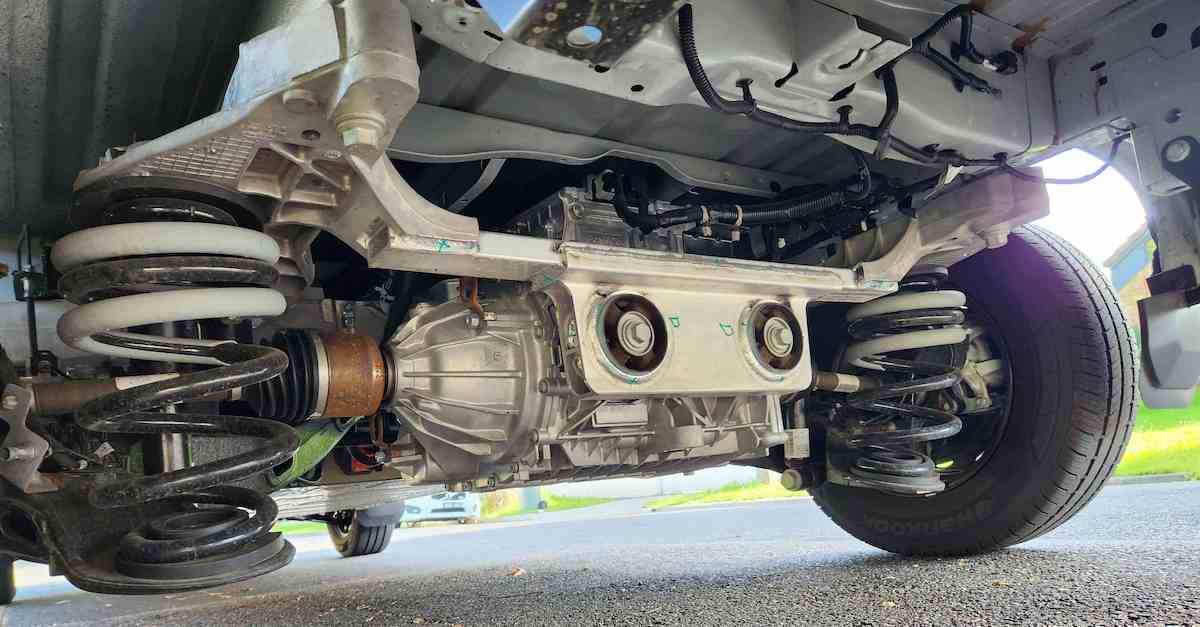
Added features in the E-Transit versus the ICE versions include the ability to program cabin pre-heating/cooling and the FordPass ‘Power My Trip’ function. This latter works through connection with the vehicle’s inbuilt satellite navigation.
Once a route is programmed into the system, the current state of charge plus addition to real-time traffic conditions will be used to identify charging stops if/when they are needed during the trip – as well as estimating the amount of time needing to be spent at each charging station.
During the launch event attended by The Driven, Ford was at pains to emphasise the levels of testing of the vehicle before its release with over 240,000 km done in extremes of heat, cold and rough roads.
The battery is the liquid cooled NCM chemistry unit as used in the Mustang Mach-E electric (also coming to Australia soon) – although the Ford representatives did not rule out LFP chemistry batteries in the future, as is currently being done in the recently released base model Mach-E.
Driving
When it comes to driving the electric Transit – the advantages of electric versus ICE fast become apparent.
The first thing that strikes you is the silence of the drive compared to its turbo diesel siblings. This is quickly followed by the realisation that the instantaneous take-off and high torque of an electric motor mean that you can easily keep up with the traffic from the get-go, rather than wait for the diesel to stir itself long after the push of the accelerator.
For delivery drivers doing stop-start driving in inner city areas, this feature alone will make daily driving a vastly more pleasant experience.
That’s because you no longer need to do the tiring mental adjustments and pre-planning inevitably involved in waiting for the diesel to wind up in speed and torque to do an overtaking (or any other) manoeuvre in more nimble traffic.
Another noticeable difference is in the improved handling characteristics offered by the low centre of gravity (due to the mid-mounted battery under the floor) and the independent rear suspension.
Together with the E-Transit’s sprightly performance, they enable a very car-like driving experience and handling over the cart-sprung live rear axle found in the internal combustion engine versions.
However, in all other respects it is still a Transit van – meaning there is very little to add regarding the interior, seats, controls, touch-screen or connectivity. EV or ICE, these are basically the same. (Although former ICE Transit drivers looking for the spare wheel may scratch their head if they look under the rear first).
Driving Range
The E-Transit offers a reasonable driving range for its 68kWh battery, at up to 307 km (WLTP) for the mid-roof and 295 km (WLTP) for the high roof.
Ford also suggested that load would not greatly affect these numbers as the E-Transit’s main range limiting factor is aerodynamics rather than weight. Ford’s own research suggests this range is 2.5 times the average distance a commercial van travels each day.
For the ‘average’ business owner that should mean a significant saving in running costs and servicing down-time – for those doing ‘above average’ daily distances, they will have to do the number crunching regarding the range to see if it will work for them.
On that front: interestingly, it is rumoured that Ford in the US are on the cusp of announcing an extended range version of the E-Transit. This new version is expected to offer approximately 50% more range over the current one.
However, given it will be built in the US rather than Turkey (where the Australian version comes from), it remains to be seen whether a longer range E-Transit will be built for the European/Australian market – meaning it is debatable whether the extended range model would arrive as an option here any time soon. However, given the current Australian version is not cheap (see below), a 50% extended range version will be even less so!
Pricing and service
Australian pricing for the E-Transit starts at $104,990 (plus on-road costs). Servicing is at 12 month/30,000 km service intervals (whichever comes first). Additional options and pricing are shown below:

Comparison pricing between the ICE and electric Transit is difficult as there is no direct equivalent ICE version. However the closest ICE transit model would appear to be the 430E VO automatic, which starts at roughly $64,000 before on-road costs.
UK pricing for something akin to ours is similar to the Australian price at £53,830 plus on-roads (Au $100,750).
However, the UK also offers generous subsidies to buy electric commercial vehicles (something in the order of £5000/Au$9,500) – bringing it down to around $91,000.
(Perhaps the subsidy is to some degree propping up the prices there?) This means that currently, whilst the E-Transit is not cheap anywhere – Australia is still the most expensive place to buy one.
This by the way is unlikely to change until Australia gets a strong vehicle fuel efficiency standard, given it costs the manufacturers to bring an EV to Australia in terms of the bonus they could earn selling the vehicle in markets with one. As a result, they are likely to continue to price that lost bonus in as a premium to sell them here.
Wrap-up
Having had one on loan for a week, I found the Ford E-Transit a surprisingly easy light commercial van (LCV) to drive and live with. It was certainly a remarkably well put together and integrated electric LCV compared to the electric LCV conversions that a group of us were doing as a business back in 2008 to 2012.
So, to sum up: the new E-Transit is a low-compromise electrified version of the ever popular Ford Transit van. Offered in exactly the same physical sizes and interior layout as the ICE version, drivers either making the transition to an EV (or regularly swapping between ICE to EV in a mixed-fleet situation) will not find it hard to acclimatise to the electric one.
The only compromises over ICE versions of the Transit is the lack of a tow rating (the E-Transit is not rated for towing in any market) and reduced range on a battery as compared to a tank of diesel.
For many businesses who don’t need to tow or the range of a diesel, there are no others … except for the price. Hopefully that last will change once we get a proper fuel efficiency standard with teeth.
On the other hand, as the E-Transit moves into fleets resulting in a mix of EV and ICE versions, drivers experiencing the instant torque, better driving characteristics and the capacity to easily keep up with the traffic that the EV version offers may balk at returning to driving an ICE version!
My summary
Specifications
- Where built: Turkey
- Battery chemistry: NCM
- Versions: mid and high roof
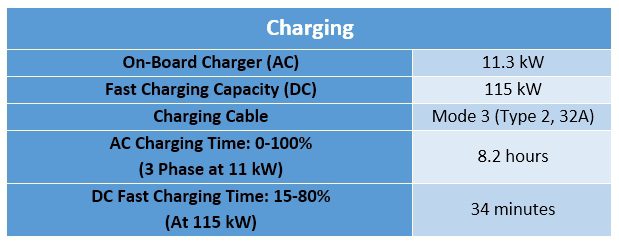
Warranty
Five-year, unlimited kilometre new vehicle warranty, eight-year/160,000 km (whichever occurs first) warranty package for the battery (to 70%) and high-voltage electric components.

Bryce Gaton is an expert on electric vehicles and contributor for The Driven and Renew Economy. He has been working in the EV sector since 2008 and is currently working as EV electrical safety trainer/supervisor for the University of Melbourne. He also provides support for the EV Transition to business, government and the public through his EV Transition consultancy EVchoice.



